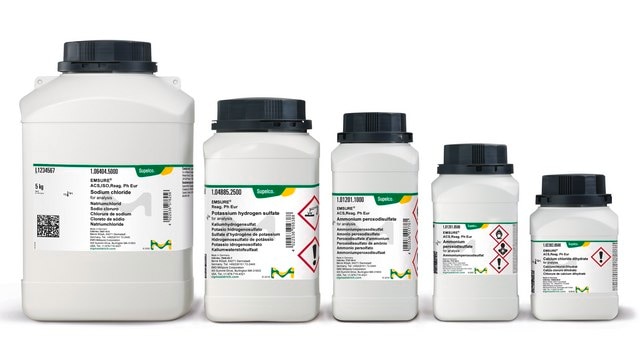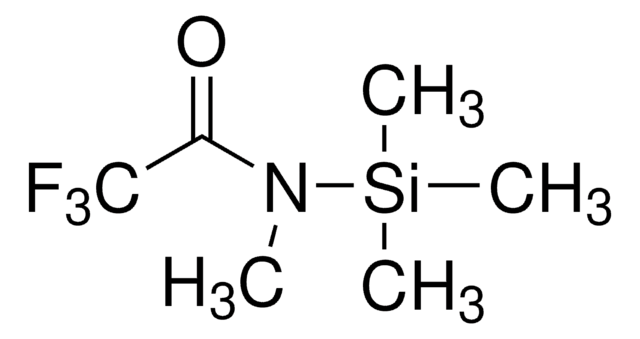63089
Magnesium oxide
BioUltra, ≥97.0% (calcined substance, KT)
Synonym(s):
Magnesia, MgO
About This Item
Recommended Products
product line
BioUltra
Quality Level
assay
≥97.0% (calcined substance, KT)
impurities
insoluble matter, passes filter test
≤0.002% total nitrogen (N)
loss
≤3% loss on ignition, 900 °C
mp
2852 °C (lit.)
solubility
5 M HCl: 0.1 M at 20 °C, clear, colorless
anion traces
chloride (Cl-): ≤100 mg/kg
sulfate (SO42-): ≤10 mg/kg
cation traces
Al: ≤20 mg/kg
As: ≤0.1 mg/kg
Ba: ≤10 mg/kg
Bi: ≤10 mg/kg
Ca: ≤500 mg/kg
Cd: ≤5 mg/kg
Co: ≤5 mg/kg
Cr: ≤5 mg/kg
Cu: ≤5 mg/kg
Fe: ≤50 mg/kg
K: ≤50 mg/kg
Li: ≤50 mg/kg
Mn: ≤5 mg/kg
Mo: ≤5 mg/kg
Na: ≤2000 mg/kg
Ni: ≤5 mg/kg
Pb: ≤5 mg/kg
Sr: ≤20 mg/kg
Zn: ≤5 mg/kg
λ
0.1 M in 5 M HCl
UV absorption
λ: 260 nm Amax: ≤0.040
λ: 280 nm Amax: ≤0.025
SMILES string
O=[Mg]
InChI
1S/Mg.O
InChI key
CPLXHLVBOLITMK-UHFFFAOYSA-N
Looking for similar products? Visit Product Comparison Guide
Related Categories
Application
Storage Class
11 - Combustible Solids
wgk_germany
WGK 1
flash_point_f
Not applicable
flash_point_c
Not applicable
ppe
Eyeshields, Gloves, type N95 (US)
Choose from one of the most recent versions:
Certificates of Analysis (COA)
Sorry, we don't have COAs for this product available online at this time.
If you need assistance, please contact Customer Support.
Already Own This Product?
Find documentation for the products that you have recently purchased in the Document Library.
Customers Also Viewed
Our team of scientists has experience in all areas of research including Life Science, Material Science, Chemical Synthesis, Chromatography, Analytical and many others.
Contact Technical Service





